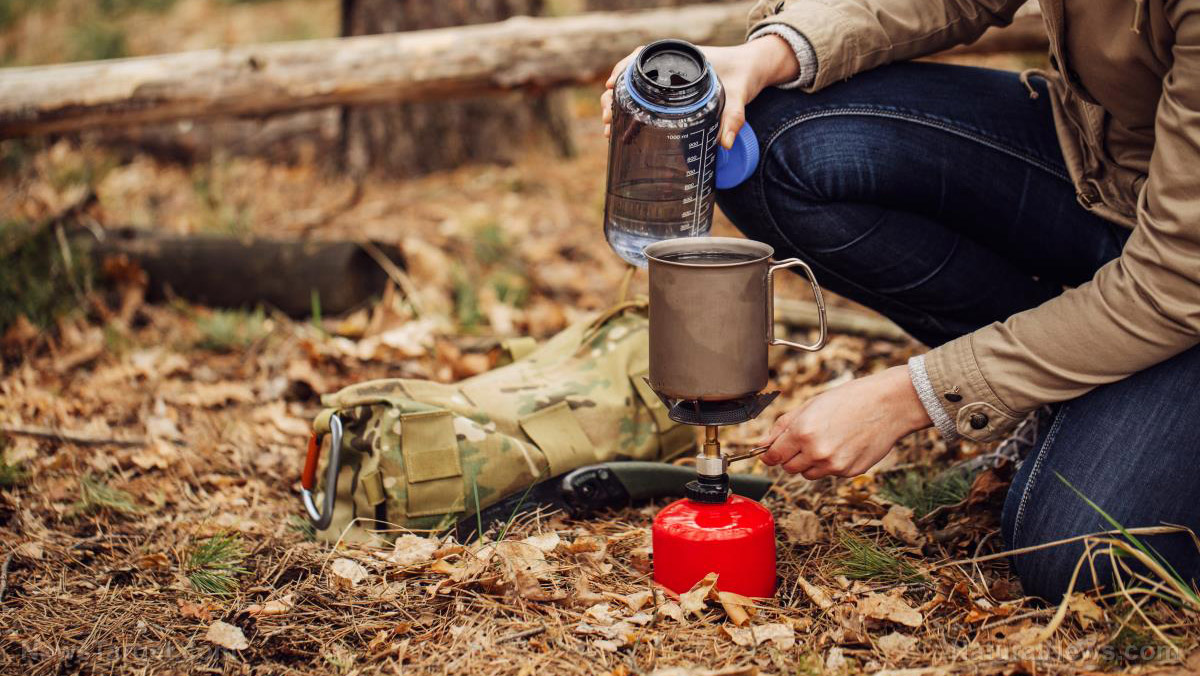Different methods to preserve food in the ground
11/02/2018 / By Zoey Sky

Back in the day, pioneers had to withstand harsh winters. Through natural storage, they figured out how to preserve food in the ground. This unique approach to storing food allowed them to enjoy produce even during winter. (h/t to PreppersWill.com.)
There are several methods you can use to store your food in place.
Natural preservation
Natural preservation, also called late harvest, involves leaving vegetables in the ground. This method is perfect if you prefer to leave your produce in place instead of picking them and transferring them to a different area. Examples of crops that store well with this method include chicory and escarole.
Chicory and escarole
You’ll need:
- Planted chicory and escarole
- Dried ferns or straw
- Two boards (must be the same length as the planted rows)
- Thin wooden strips or branches
- Plastic sheeting
Instructions:
- You can start this method around November, before the severe cold. Submerge the edges of the boards along the outer length of the planted rows of chicory and escarole to enclose them.
- Cover the boards with branches or wooden strips, then cover the branches with a bed of dried ferns or straw.
- Cover the entire structure with some plastic sheeting. Don’t let gutters form on the fern layer. (Related: Ten potent SUPERFOODS you can grow right at home, without spending a fortune.)
Here are some other vegetables that you can store in the ground using the same method:
- Black radish – Black radish has medium resistance to cold. Protect it with straw in severe cold. Black radish has a strong, peppery flavor which can be neutralized by cooking or peeling the vegetable before serving.
- Brussels sprouts – These have a good resistance to frost, but they must be protected with straw during a severe freeze.
- Cabbage and white cauliflower – These vegetables have medium resistance to frost, but you can leave them in the garden until severe cold.
- Carrots – Carrots have good resistance to cold, but they also need to be protected with straw in severe cold.
- Leek – Leeks have good resistance to frost. Just protect them with straw during severe frost.
- Parsnip – Parsnips have excellent resistance to frost. You can leave them in the ground covered with a few inches of soil.
The trenching method
The trenching method, or heeling in, is another way of preserving food in the ground. This method is effective because it allows the vegetables to remain planted while also protecting them from frost. This method, which works best with cabbage and lettuce, requires well-drained soil. If you live in areas with severe climates, you need a cellar for optimum results.
Lettuce
You’ll need:
- Lettuce
- Branches
- Straw
Instructions:
- Dig a trench sixteen inches deep.
- Place the lettuce plants in the trench. Make sure the lettuce roots are side by side, but not too close to one another.
- Cover the trench with branches, then cover it with straw.
Preserving food in the ground with silos
If you don’t have a root cellar, you can still preserve vegetables in the ground using different silos. A silo, which is said to have been developed by the French, is an underground excavation used to preserve food.
You can use a silo to preserve vegetables in different ways. One option is to build a silo above the ground. Alternatively, you can make one by digging a hole in the ground.
Preserving food in the ground with a brick silo
You’ll need:
- Vegetables (e.g., cabbage, carrots, celery, or turnips)
- 2-inch thick hollow bricks or cement blocks
- Dried autumn leaves
- Wood planks (for the frame and cover)
Instructions:
- Dig a rectangular hole 16 to 32 by 20 inches deep.
- Cover the bottom and walls with bricks or cement blocks.
- Set the wall bricks on the edge, then secure them below using the bottom bricks. Use the planks to form a wooden frame that will secure the upper part of the brick wall.
- Alternately place layers of vegetables with layers of leaves. Make sure the top row is covered with a layer of leaves, and don’t leave any exposed vegetables.
- Close the silo with heavy planks secured in place with big rocks.
Preserving food in the ground with a pit silo
You’ll need:
- Vegetables (cabbage, carrots, etc.)
- Dried leaves
- Plastic sheeting
- Wood planks
Instructions:
- Select a dry and well-drained spot in your garden protected by a hedge or wall.
- Dig a 16-inch deep pit that’s proportionate to the number of vegetables you want to preserve.
- Spread the soil in the pit. Pack it around the hole to raise its sides.
- Clean the cabbage. Remove all the leaves that are bruised, rotten, or too green.
- Place a layer of cabbage at the bottom of the pit. Leave the roots facing up. Cover this row of cabbage with dried leaves.
- Place a second layer of beets or roots, then cover it with a layer of dried leaves. Repeat this process until you reach the top.
- Once you’re done layering vegetables and leaves, cover everything with a final layer of leaves.
- Top the silo with wood planks, then cover the planks with plastic sheeting or other water-resistant material.
You can also use the methods listed above to preserve meat like jerky. Before you try out these food preservation methods, consider favorable environmental conditions to avoid food spoilage.
By learning about these natural methods, you can preserve food when SHTF even without electricity or a root cellar.
You can read more articles about natural food preservation tips at FoodSupply.news.
Sources include:
Tagged Under: brick silo, canned food, canning food, Food Preservation, food safety, Food storage, food supply, ground food preservation, heeling in, home canning, homesteading, natural food preservation, off grid, pit silo, preparedness, prepping, preserving food, preserving vegetables, SHTF, silo, survival, survival food, trenching method




















